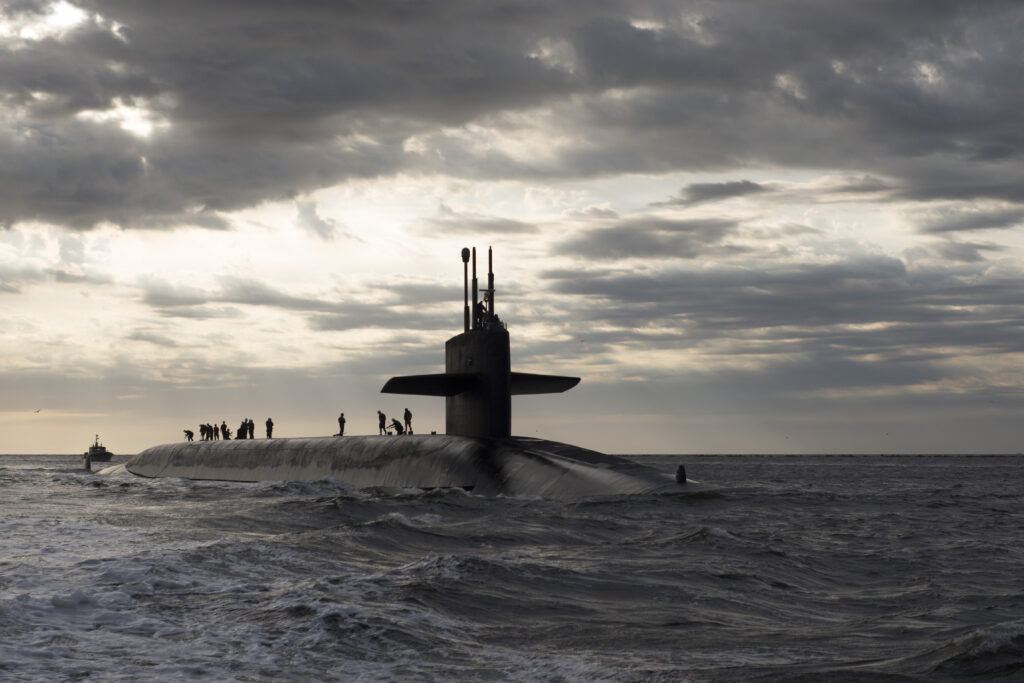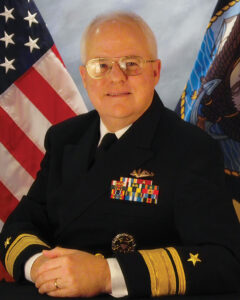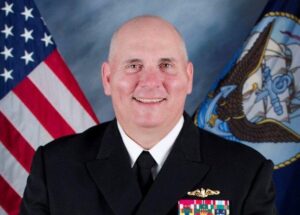Spending Bill Delay Would Trip Up Nuclear Missile Sub: CR Vs. ORP
Posted on

USS Rhode Island (SSBN 740), one of the aging Ohio-class ballistic missile submarines.
CRYSTAL CITY: If Congress doesn’t pass the annual defense spending bill — already 26 days overdue — by January 1st, the Navy’s top priority program may miss its sailing date 14 years from now.
The Ohio Replacement SSBN submarine, which will carry 70 percent of American nuclear warheads, “will come to almost a screeching halt” without a proper spending bill, warned Vice Admiral Joseph Mulloy, the Deputy Chief of Naval Operations.

Vice Adm. Joseph Mulloy
Previous delays already “took all of the margin out of the program,” said the Navy’s Program Executive Officer for submarines, Rear Adm. Michael Jabaley. (Both admirals spoke Wednesday to the Naval Submarine League‘s annual conference). So there’s no margin left for error, whether it’s technical or congressional. If the Navy can’t fund steady, uninterrupted work today, each day you lose now will compound to cost multiple days by 2030 — or 2031, or 2032, or whenever the first sub is delayed to.
The awkwardly named ORP is weeks away from its Milestone B review, said Jabaley. That’s when the Office of the Secretary of Defense officially declares (or doesn’t) that the program is ready to move from research and development into production. In the near term, that means a new, more detailed, more intensive stage of design and prototyping. The Pentagon’s proposed budget for fiscal year 2017, which began October 1st, includes $773 million in the SCN account (Ship Construction, Navy) for this effort — but Congress hasn’t passed it.
Instead, the government is limping along under what’s called a Continuing Resolution, which allows agencies to spend whatever was appropriated for them last year. That works for programs moving at a steady pace, but it prevents starting new programs, terminating old ones, or — as in ORP’s case — doing more than last year.
Worse yet, ORP’s old funding is R&D money, not SCN. That may seem like a matter of labels. Jabaley himself admits he could keep try to keep work going by relabeling some SCN activities as R&D, but he doubts his superiors would approve. Jabaley can keep design work moving for a while using R&D funds, he says, but he’ll run out of room around January 1st.
The current Continuing Resolution expires December 9th. The hope is that the lame-duck Congress and the lame-duck President will pass proper spending and policy bills; the fear is they’ll extend the CR into the New Year.
“There’s not a lot of days” between the time Congress comes back and the time the CR expires, warned Mulloy. That said, committee staff has worked out most of a compromise, he said. In fact, “they actually thought they had a conference position going,” Mulloy said ruefully, until it ran aground on the annual partisan debate about protecting Sage Grouse habitat near military bases.
The Ohio Replacement is the most important program, but it’s hardly the only one hamstrung by the CR, said Mulloy. Across the $15 billion shipbuilding budget, he said, “I’ve got the right amount of money, but I’ve got $5 billion in the wrong place” — which means the Navy’s not allowed to spend it, on ORP or anything else.

Rear Adm. Michael Jabaley
With the oldest Ohio reaching a staggering 42 years of service and retiring just as the first Ohio Replacement sub joins the fleet, there’s no margin of error left. “My job is to buy margin back into that schedule,” said Jabaley.
The Navy and its contractors — Electric Boat and Newport News — are doing everything they can to manage the massive workload and buy back time. “We are already building pieces of the ship,” said Jabaley: Some prototype components being bought with R&D funds will be used — assuming they work right — in the first ORP sub. The program is looking at buying other components of the first submarines before their construction is legally authorized, but that will require Congress to vote Advanced Procurement (AP) funds or other special authorities. They’re also seeking economies of scale with the famously efficient Virginia-class attack submarine program and even the badly over-budget nuclear-powered Ford-class carriers.
Instead of all this agony, outside analysts sometimes suggest the Navy could simply buy fewer Ohio Replacement submarines. After all, we’ve got from a fleet of 41 first-generation nuclear missile subs — the “41 for Freedom” — to 18 and then 14 Ohios, with a plan for only 12 Ohio Replacements — and the strategic requirement is for only 10 SSBNs in service at any given time. Why not go a little lower yet?
We’ve used up all our margin for the number of submarines, too, said Jabaley. The 10-SSBN minimum is derived from highly classified calculations of how widely the missile subs need to disperse to cover key targets while remaining concealed, and of how long each submarine spends in maintenance rather than at sea. We actually will go down to just 10 subs at one point, he noted, but that’s only possible at a particular, peculiar point in time, when all the Ohios are old enough to have finished their lengthy mid-life overhauls and none of the Ohio Replacements is old enough to need one yet.
“Normally, it takes 12 to make 10,” Jabaley said: That is, 12 submarines in the fleet to have 10 available for operations at any given time. That sets an absolute minimum for the size of the Ohio Replacement class, he said, channeling Monty Python: “12 is the number and the number shall be 12.”
Subscribe to our newsletter
Promotions, new products and sales. Directly to your inbox.
